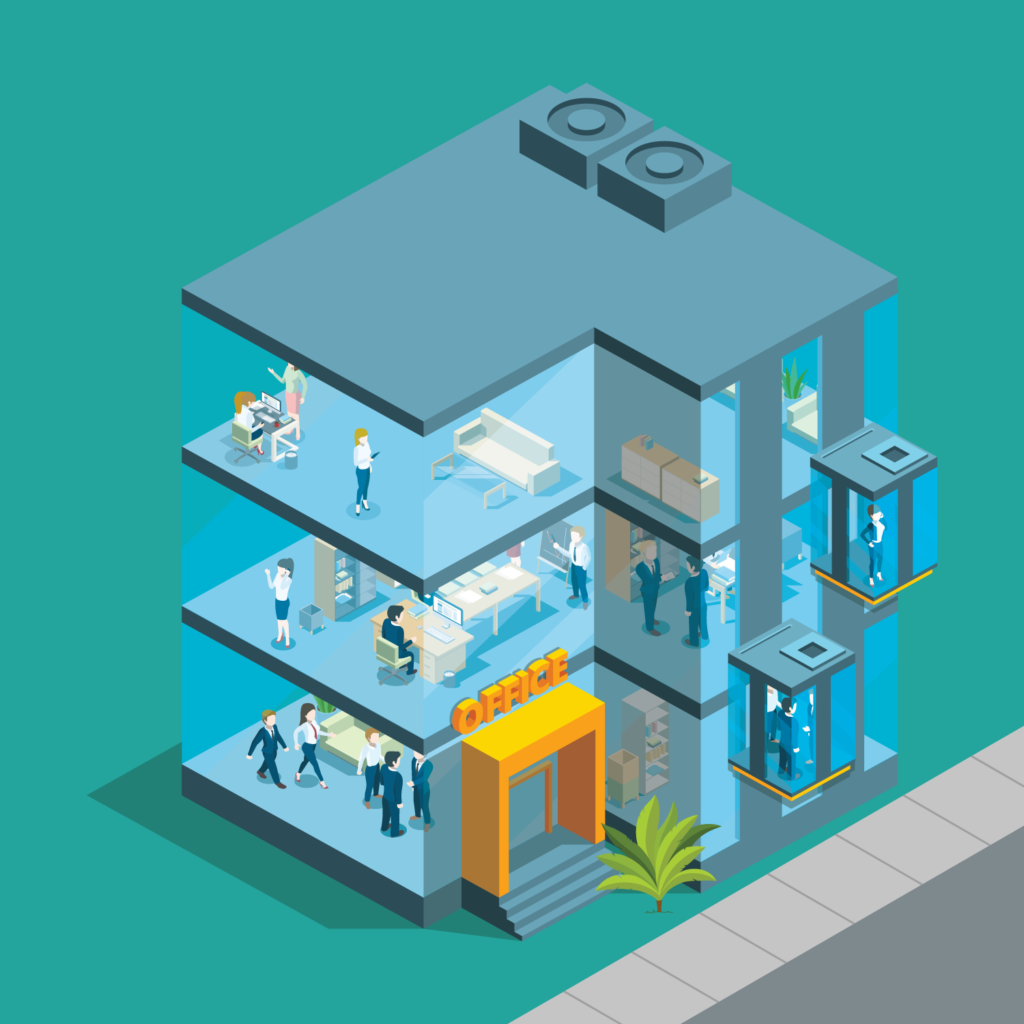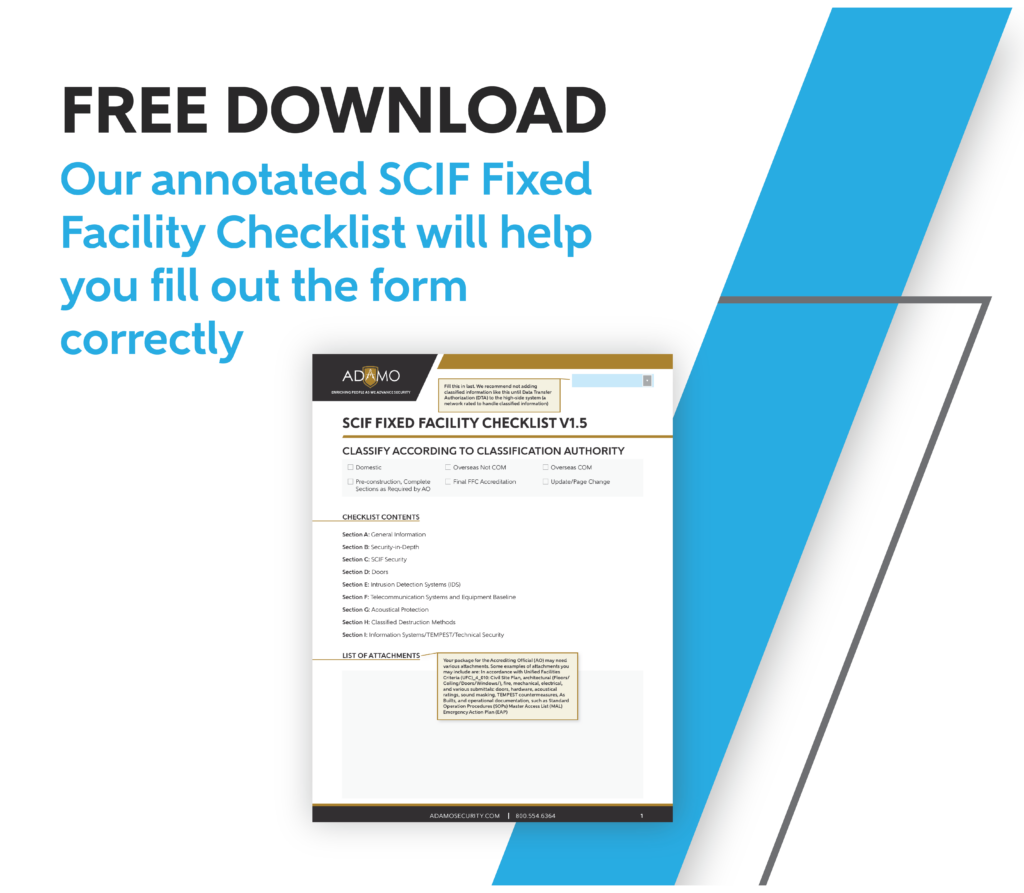Types of Comparted Areas, when they’re used and their requirements
When more than one classified program intends to operate within a single SCIF or SAPF, Compartmented Areas (CA) become necessary. These are essentially sub-divisions of the facility that can allow you to save on costs by not needing to build multiple facilities.
Compartmented areas can be great for contractors who may have multiple contracts for programs with different agencies or organizations that can be operated in the same area. Rather than having to construct two or more facilities, you can build one and save on the budget, as long as the organizations both agree to share a space. These types of spaces may be common for bigger contractors to use.
Not every Intelligence Community organization will be willing to share space with another. If they feel their program is too sensitive for a shared space, they may decline. Different organizations will have different preferences when it comes to CAs.
In the ICD 705 Technical Specifications, or Tech Spec, you can find three types of CAs that meet various program needs.
Types of Compartmented Areas
Type I CAs are for workstations where compartmented information is viewed but not stored or discussed. This is great for programs that need a large workspace and a floor plan that allows for cubicles or a more open office space. You can have computers in this space, but printers, copiers and scanners require prior approval and an established document control procedure.
There are some further security measures that you’ll need to take, like ensuring that any computers that face a common work area or primary door never display classified information.
In Type II CAs, discussion of compartmented information may take place and may also be viewed and processed if the facility is equipped and approved for it. These areas will typically be rooms like offices or conference rooms. Type II CAs need to meet the Sound Transmission Class (STC) rating requirements for the facility to ensure that anything discussed in the space cannot be heard outside of it.
These areas can be used for secure video teleconferencing and can include secure telephones for discussions of compartmented information. Like Type I areas, they can also include printers, scanners and copiers with prior approval, and you can also have fax and secure transfer of data with approval.
Type III CAs are also able to house workstations and discussion areas, but they may also be used for storage and retention of physical classified information like thumb drives, briefs and laptops. These materials need to be stored in a Government Services Administration (GSA) approved container.
All personnel with access to a Type III CA need to be formally briefed into all programs within the area, and visitors are only allowed when all the compartmented information is stored and out of sight.
Requirements for Compartmented Areas
To get a CA approved by the Accrediting Official (AO), you’ll need to complete the CA Checklist that can be found in the Tech Spec. Here, you’ll indicate what equipment you intend to use within the space, what office configuration you’ll have and how you’ll control access, as well as other ways you’ll address the area’s security.
You can build CAs in existing facilities if there’s a need for it. When CAs are in use, all the organizations utilizing the space will have to sign a co-use agreement, which includes information like points of contact for each tenant, the facility classification level and duration of the co-utilization.
Related: What You Need to Know to Build a SCIF
The Tech Spec says that CAs shall not have spin-dial combination locks or independent alarm systems. It also recommends a number of types of visual protection that can be used for any screens in the CA to prevent the inadvertent viewing of compartmented information, like polarized privacy screens.
Type III CAs will each need its own Access Control System, though it doesn’t need to be automated. You can use a regular lock, visual recognition or a badge reader, as long as there is not a spin-dial lock in use.
When utilizing CAs within a facility, it may be necessary to include a neutral zone or non-discussion area between the SCIF’s primary entrance door and the door to each program’s CA. This will mean you may have to sacrifice some square footage in your facility in order to accommodate that physical separation.
If navigating the Tech Spec for spaces like CAs seems like a daunting task, you don’t have to do it alone. The ICD 705 experts at Adamo are equipped to consult with you to guide your project to accreditation. Contact us today to learn how we can be your SCIF and SAPF construction partner.




